I want to share this function that is good for hiding and showing many views in UIStackView, because with all the code I used before didn't work smooth because one needs to removeAnimation from some layers:
extension UIStackView {
public func make(viewsHidden: [UIView], viewsVisible: [UIView], animated: Bool) {
let viewsHidden = viewsHidden.filter({ $0.superview === self })
let viewsVisible = viewsVisible.filter({ $0.superview === self })
let blockToSetVisibility: ([UIView], _ hidden: Bool) -> Void = { views, hidden in
views.forEach({ $0.isHidden = hidden })
}
// need for smooth animation
let blockToSetAlphaForSubviewsOf: ([UIView], _ alpha: CGFloat) -> Void = { views, alpha in
views.forEach({ view in
view.subviews.forEach({ $0.alpha = alpha })
})
}
if !animated {
blockToSetVisibility(viewsHidden, true)
blockToSetVisibility(viewsVisible, false)
blockToSetAlphaForSubviewsOf(viewsHidden, 1)
blockToSetAlphaForSubviewsOf(viewsVisible, 1)
} else {
// update hidden values of all views
// without that animation doesn't go
let allViews = viewsHidden + viewsVisible
self.layer.removeAllAnimations()
allViews.forEach { view in
let oldHiddenValue = view.isHidden
view.layer.removeAllAnimations()
view.layer.isHidden = oldHiddenValue
}
UIView.animate(withDuration: 0.3,
delay: 0.0,
usingSpringWithDamping: 0.9,
initialSpringVelocity: 1,
options: [],
animations: {
blockToSetAlphaForSubviewsOf(viewsVisible, 1)
blockToSetAlphaForSubviewsOf(viewsHidden, 0)
blockToSetVisibility(viewsHidden, true)
blockToSetVisibility(viewsVisible, false)
self.layoutIfNeeded()
},
completion: nil)
}
}
}

